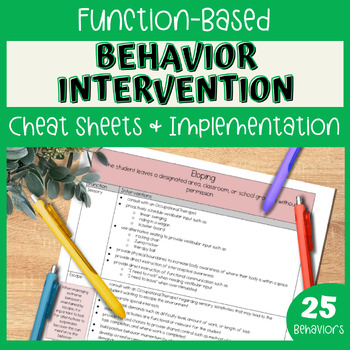
In my classroom and in my role as an autism & low-incidence disability coach, few days go by when I am not trying to decipher student behavior. After working with hundreds of students and thousands of educational professionals, I have developed a 5-step system for behavioral intervention that has worked really well. In today's post, I will walk you through each step to help you with solving problem behaviors that may be impacting student success in your classroom. ...

In my classroom, I used Unique Learning System for a majority of my curriculum. However, I found that I often wanted to supplement the stories with rich, authentic picture books. So my Picture Book Communication and Comprehension Supports units were born! ...

Data collection on IEP goals is one of the most important tasks a special education teacher takes on because it helps us plan for interventions and monitor student progress. But it is also one of the most tedious tasks we do! Over the years, I have created a system for organizing my IEP goal progress monitoring that has made it easier to set up, implement, and even delegate! The first step is designating a binder for each student on your caseload. I prefer using colored binders because I color-code each of my students' materials each year. In the very front of the binder, I include an IEP at a Glance. We use IEP Anywhere so they luckily create this for us! I also include any essential medical or behavior plans for that student. Then, I get pocket dividers for each subject I will be monitoring. This is a great way to organize the different subjects but my favorite part is the pocket. This is where I store all of my work samples. Then, at the end of each quarter wh......

Back to School season is upon us! I know I can't believe it either. To make heading back to the classroom easier I have compiled my top 10 special education resources for your classroom. Click on any of the cover images below to find the resource in my TPT store! Resources for Teacher Organization Before the students even start, it is essential to get organized! So much of the SpEd world revolves around paperwork so these resources are great time (and sanity) savers! 1. NO PREP IEP Organization Kit : This kit provides helpful resources for IEP planning and progress reports. Check out this blog post for a page-by-page snapshot of what's included: Must-Have IEP Organization Kit 2. NO PREP IEP Progress Monitoring BUNDLE : This bundle includes over 100 progress monitoring sheets covering TONS of skills in Math, Reading, Writing, Communication, Vocabulary, Daily Routines, and Fine Motor that are ready to print and go! Resources for Routines The first week (or two!) of school shoul......
Subscribe to:
Comments (Atom)






